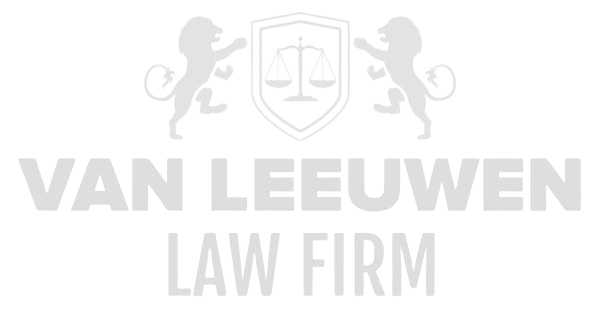The sector of government institutions and the public sector represents a complex and multi-layered network of organizations that are not merely administrative entities but are fundamentally involved in shaping society and ensuring the well-being of its citizens. This sector encompasses local, regional, and national governments, as well as numerous public institutions ranging from schools and universities to hospitals, research centers, and transportation agencies. The public sector is not a static entity; it is a dynamic system in which the interaction between legislation, policy, and implementation is continuously recalibrated in response to social, economic, and political developments. Every decision made within this sector has far-reaching implications for citizens’ quality of life, societal stability, and the extent to which fundamental rights and freedoms are protected. Efficient management of public resources, the development and implementation of policy, and oversight of legal compliance are core activities that carry not only operational but also ethical and societal dimensions.
The public sector also functions as a critical buffer between individual interests and collective needs, with the primary goal of achieving a just, stable, and inclusive society. This requires a delicate balance between providing access to essential services, enforcing regulations, and anticipating future societal changes. The sector operates within a constantly evolving landscape in which technological innovation, demographic shifts, and economic fluctuations impose new demands on policy and execution. The increasing complexity of society necessitates that government institutions act not merely reactively but adopt a proactive stance, anticipating potential societal bottlenecks and crises. The ability to respond effectively to urgent issues while simultaneously developing long-term strategies distinguishes an effective public sector from a purely administrative bureaucracy.
Government Institutions and Their Roles
Government institutions form the organizational and administrative foundation of the public sector and bear immense responsibility for the functioning of society. At the national level, the government consists of the parliament, the executive branch, and various ministries, each fulfilling a specific role in setting legislation, policy priorities, and national strategies. Ministries, ranging from Finance to Education, Health, and Defense, are entrusted with profound and specialized tasks that together create the framework of a functioning state. The parliament establishes the legal frameworks within which policies can be developed, while the executive ensures the implementation of these frameworks in concrete programs and projects. This division of responsibilities not only guarantees a distribution of powers but also serves as a safeguard against the concentration of authority, strengthening the democratic legitimacy of government decisions.
Local governments, including municipalities, provinces, and regions, act as the direct implementers of national policy at the local level. They manage crucial services such as urban planning, waste management, infrastructure, and public transportation, serving as the first point of contact for citizens in daily life. The success of national policy largely depends on the efficiency and effectiveness with which local institutions carry out these tasks. Moreover, the interaction between national and local governments constitutes a continuous dialogue in which practical implementation, regional needs, and political priorities are harmonized. This collaboration is essential for achieving policy goals without administrative inefficiencies or policy incoherence undermining effectiveness.
The complexity of government institutions is further amplified by their role in crisis management and anticipating societal changes. Whether addressing economic recessions, natural disasters, pandemics, or social unrest, government institutions must be capable of acting swiftly and effectively, combining short-term interventions with long-term strategies. This requires a high level of coordination, transparency, and strategic planning, with policymakers, administrative officials, and societal actors working closely together. The role of government institutions therefore extends beyond mere service administration; they are architects of societal resilience and stability.
Public Services and Provisions
Public services form the operational core of the public sector, aiming to safeguard welfare, security, and equal opportunities for all citizens. Education, from primary schooling to higher education, exemplifies how government intervention structures access to knowledge and personal development. Schools and educational institutions are not only administered but also regulated under frameworks that ensure equity, quality, and inclusivity. In addition to formal education, the public sector provides preventive and curative healthcare, protecting citizens from illness, providing medical treatment, and contributing to overall public health. Government institutions regulate hospitals, clinics, and medical professionals, establishing standards for accessibility and quality to minimize inequality in service delivery.
Social security and benefits represent another cornerstone of public services, reflecting the social contract between the state and its citizens. Unemployment benefits, welfare programs, pensions, and other forms of social support are mechanisms to ensure societal stability and protect vulnerable groups. These services require a complex administrative infrastructure, carefully assessing individual cases while deploying societal resources efficiently. Public safety, including police, fire, and emergency services, plays an equally critical role, not merely reacting to incidents but actively contributing to prevention and risk management. The quality and reliability of these services are directly linked to public trust in government and the degree to which citizens feel safe and supported in their daily lives.
Integrating technology into public services offers opportunities to improve efficiency and transparency. Digital platforms, big data analysis, and AI applications can guide policy, optimize service delivery, and enhance citizen participation. At the same time, these innovations introduce challenges regarding privacy, data security, and ethical accountability. Carefully balancing technological potential with societal responsibilities is essential to ensure that innovation does not exacerbate inequality or undermine trust in public institutions.
Non-Profit Organizations and Public Policy Implementation
Non-profit organizations play a complementary and often crucial role within the public sector. These organizations focus on specific societal issues such as poverty alleviation, environmental protection, human rights, and social inclusion, filling gaps in public services not fully covered by the government. Their role extends beyond service delivery; they act as critical observers of government policy, advising policymakers and evaluating program effectiveness. Their independent position allows non-profit organizations to provide valuable insights that contribute to a more responsive, evidence-based government, ensuring that policies are adjusted to real needs and societal impact.
Furthermore, non-profit organizations frequently take an active role in implementing government programs at the local level. They mobilize volunteers, manage funding, and execute projects aligned with the strategic objectives of government institutions. Their presence allows for a flexible and context-specific approach to service delivery, using local knowledge and specialized expertise to maximize the impact of policy measures. This partnership between government and the non-profit sector strengthens the public sector’s capacity to address complex social challenges effectively, ensuring resources are used efficiently and maximum societal value is achieved.
Non-profit organizations also contribute to public awareness and participation. Through educational programs, campaigns, and research, they draw attention to issues that might otherwise remain underexposed. This not only increases civic engagement but also strengthens the democratic legitimacy of policy decisions. By actively involving citizens in program evaluation and suggesting improvements, non-profit organizations act as a bridge between society and government, continuously enhancing the effectiveness and transparency of public services.
Challenges and Future Developments
The public sector faces complex challenges that directly impact the efficiency, effectiveness, and legitimacy of government services. One of the most pressing issues is meeting the growing demand for public services amid limited resources. This necessitates innovative approaches to service delivery, including process optimization, digitalization, and strategic resource allocation, to maintain service quality without disproportionate costs. Policymakers and administrative institutions must anticipate demographic changes, migration patterns, economic fluctuations, and societal trends, ensuring that policy is dynamically and adaptively designed.
Transparency and accountability remain central challenges. Citizens increasingly demand insight into how decisions are made, how public funds are spent, and what outcomes government programs achieve. Promoting an open government requires robust mechanisms for information provision, participation, and oversight. Implementing digital platforms for citizen engagement, strengthening audit processes, and developing interactive communication strategies are ways government institutions can bridge the gap between policy and the public. This enhances trust and legitimacy while fostering active societal involvement in public policy.
Sustainability and environmental responsibility are increasingly strategic priorities for the public sector. Government institutions and non-profit organizations play a central role in formulating and implementing environmental policies, promoting energy efficiency, supporting renewable energy, and protecting natural resources. Sustainability initiatives must be integrated across all layers of public service, from infrastructure and mobility to healthcare and education, to achieve broad and lasting impact.
Technological advancement represents both an opportunity and a challenge for the public sector. Innovations such as artificial intelligence, big data analytics, and blockchain offer possibilities for improving efficiency, informing policy decisions, and increasing transparency. At the same time, these technologies pose significant risks, including data privacy, cybersecurity, and ethical dilemmas related to automated decision-making. Successfully navigating this technological transition requires a strategic, integrated approach that combines innovation, security, and social responsibility, ensuring the public sector is future-proofed without compromising public trust or citizens’ rights.
Financial and Economic Crime
Government institutions and the public sector occupy a central and indispensable position in the functioning of modern societies, ensuring the provision of essential services, upholding the rule of law, and maintaining public confidence in state structures. These entities range from central and local government bodies to public institutions, including hospitals, educational establishments, and public utilities, each responsible for the administration of significant resources and the execution of critical societal functions. The public sector, by virtue of its substantial budgets, the intricate regulations governing its operations, and the necessity for transparency and accountability, is uniquely susceptible to financial and economic crime. Challenges in this area are multi-layered and demand strategic, methodical, and deeply analytical approaches to preserve integrity, enforce compliance, and sustain public trust in governance.
The nature of financial and economic crime within public institutions is not only diverse but often highly sophisticated, encompassing acts that erode efficiency, undermine ethical standards, and distort fair competition. It is a domain where breaches of law and ethics can have far-reaching repercussions, impacting not only the operational efficiency of institutions but also the social contract between governments and the citizenry. Addressing these threats requires comprehensive mechanisms of oversight, proactive risk management, and a deeply ingrained culture of integrity, where adherence to legal and ethical standards is non-negotiable.
1. Corruption and Bribery
Corruption and bribery represent some of the most pernicious risks to public institutions, directly threatening the equitable provision of services and the legitimacy of governmental authority. Practices such as manipulating procurement processes, accepting illicit payments, and falsifying contractual agreements compromise both operational efficiency and public trust. The consequences extend beyond mere financial loss, manifesting in increased costs, diminished service quality, and widespread skepticism toward institutional integrity.
An illustrative case of corruption occurs when an official accepts a bribe to award a highly profitable contract to a company irrespective of its qualifications or suitability. The resulting misallocation of resources often leads to substandard service delivery and inflated expenses, ultimately undermining the stewardship of public funds. Counteracting such practices requires the establishment of rigorous transparency frameworks, including detailed procurement procedures, independent oversight, systematic audits, and formal reporting channels for suspicious activities. Cultivating ethical behavior through comprehensive training programs and awareness campaigns is equally critical in preventing bribery and promoting accountability.
The subtleties of corruption are not confined to overt exchanges of money; they can also manifest through nepotism, favoritism, and subtle coercion, all of which distort competitive processes. Mitigating these risks demands a multifaceted approach, combining legal enforcement with institutional reforms and ethical leadership, creating an environment where integrity is both expected and enforced.
2. Procurement and Contract Management Fraud
Procurement and contract management fraud constitutes a significant vulnerability for public sector institutions. This form of financial crime can include bid rigging, falsifying contracts, manipulating evaluation criteria, and collusion among vendors, all of which distort market fairness and increase costs. The repercussions are severe, ranging from inefficient resource allocation to compromised quality of public services and eroded taxpayer value.
A concrete example is a consortium of companies generating false bids to artificially raise contract prices and exclude genuine competition. This manipulation results in inflated costs for government projects and diminishes the return on public investment. Addressing such fraud requires strict adherence to procurement protocols, thorough due diligence on vendors, continuous monitoring of contract execution, and robust mechanisms for fraud detection. Transparent digital procurement platforms and policies fostering equitable competition further reinforce the integrity of public sector procurement.
Preventing procurement fraud also involves cultivating institutional awareness, encouraging whistleblowing, and implementing preventative controls at multiple stages of the procurement process. By embedding vigilance and ethical oversight, public sector entities can mitigate the financial and reputational risks posed by procurement-related crimes.
3. Misuse of Public Funds
Misappropriation or inefficient use of public resources represents a profound challenge to governance and societal trust. This category of financial crime ranges from diverting taxpayer money for personal gain to wasteful expenditure resulting from inadequate management practices. Such misuse directly undermines fiscal responsibility and diminishes public confidence in institutional stewardship.
An example of misuse is when public funds are allocated for personal expenditures by officials, such as luxury travel or private purchases, rather than serving legitimate public purposes. Such behavior not only generates tangible financial losses but also erodes public perception of government credibility. Preventative measures require comprehensive budgetary controls, meticulous reporting protocols, frequent audits, and the cultivation of a culture emphasizing accountability, ethics, and responsible fiscal management. Clear guidelines and stringent internal controls are essential to identify, prevent, and remediate instances of misused funds.
The broader implications of public fund misuse extend beyond immediate financial damage, affecting policy implementation, public service delivery, and overall institutional legitimacy. Strategic oversight and ethical governance are therefore critical in safeguarding resources against abuse.
4. Money Laundering and Financial Transactions
Public sector institutions are susceptible to money laundering risks, particularly when handling large financial flows and engaging in cross-border transactions. Criminal actors may attempt to disguise the origin of illicit funds by integrating them into legitimate public expenditures or exploiting complex financial structures to obscure illegal activity.
A pertinent example involves the use of public infrastructure projects to channel illicit funds, achieved through cost inflation or diversion of resources into ostensibly legitimate initiatives. Combating money laundering requires robust measures, including monitoring financial transactions, conducting thorough due diligence on contractors and partners, and complying fully with anti-money laundering legislation. Training personnel to detect red flags and strengthening internal financial controls are critical steps in maintaining financial integrity.
Proactive monitoring and investigative frameworks are vital, as money laundering can undermine not only financial accountability but also broader public trust and governance credibility. Systematic detection and prevention strategies are indispensable for maintaining the ethical and lawful use of public funds.
5. Compliance and Regulation
Adherence to evolving regulatory frameworks is a continuous and complex challenge for public sector entities. These regulations encompass financial reporting obligations, disclosure requirements, ethical standards, and anti-corruption legislation. Failure to comply can lead to legal penalties, fines, and reputational damage, potentially destabilizing institutional authority and public confidence.
Ensuring compliance involves implementing systems that maintain transparency and accountability in the execution of public duties and management of funds. Accurate reporting, adherence to disclosure mandates, and policies promoting ethical conduct are foundational. Institutions must remain vigilant to regulatory changes, establish comprehensive compliance programs, conduct internal audits, and embed a culture of integrity across all levels of the organization.
A proactive compliance approach not only prevents legal and financial risks but also fosters organizational resilience, public trust, and sustained effectiveness in fulfilling societal responsibilities.
6. Cybersecurity and Data Protection
In an era dominated by digital operations, public sector organizations face the critical task of safeguarding sensitive personal and governmental data from cyber threats. Cyberattacks, data breaches, and unauthorized access can compromise citizens’ privacy, disrupt public services, and damage institutional credibility.
A practical example is a cyber intrusion resulting in the theft of citizens’ personal information or classified governmental documents, potentially causing identity theft, financial harm, and erosion of trust in state institutions. Mitigation strategies include the use of encryption, regular security system updates, risk assessments, penetration testing, and strict access controls. Comprehensive staff training in cybersecurity and data protection protocols, alongside well-prepared breach response plans, are essential to ensure operational and informational security.
Protecting digital infrastructure is not merely a technical necessity but a fundamental aspect of preserving institutional integrity, citizen trust, and the capacity of government entities to deliver services efficiently and securely.
Privacy, Data, and Cybersecurity
Government and public sector entities constitute the structural foundation of modern societies, encompassing a vast array of organizations, ranging from local municipalities to national ministries and international governmental bodies. These institutions are tasked with delivering essential public services, enforcing laws, and managing critical infrastructures that sustain societal functions. With the pervasive integration of digital technologies and increasing reliance on data-driven processes, issues surrounding privacy, data protection, and cybersecurity have emerged as critical challenges. The nature of these challenges is complex and multifaceted, requiring strategic, layered, and proactive approaches to ensure the integrity, confidentiality, and availability of information, while maintaining public trust and institutional credibility.
The intersection of technological advancement and public service delivery amplifies the stakes for government entities. Breaches of privacy, unauthorized data access, or disruptions to digital infrastructure not only jeopardize operational effectiveness but can have profound legal, financial, and reputational consequences. Public sector organizations must therefore cultivate a culture of vigilance, implement rigorous security protocols, and establish comprehensive governance frameworks. Failure to address these risks systematically can erode public confidence, compromise citizen safety, and impede the ability of governments to fulfill their societal obligations effectively.
1. Protection of Personal Data and Privacy
Government organizations manage enormous volumes of personal data, ranging from basic identifiers such as names and addresses to highly sensitive records including medical histories, criminal files, and financial information. This data is essential for service delivery, law enforcement, and the execution of governmental functions. Protecting it from unauthorized access, manipulation, or misuse is critical to safeguard citizen privacy and to comply with legal obligations, such as the General Data Protection Regulation (GDPR) and other privacy laws.
A practical illustration of this challenge is the threat posed by data breaches in government databases. Hackers exploiting vulnerabilities in IT systems may gain access to sensitive personal information, which can lead to identity theft, fraud, and significant harm to affected individuals. To mitigate these risks, public sector entities must employ advanced security measures, including end-to-end encryption, robust access control mechanisms, continuous monitoring, and frequent security audits to identify and resolve vulnerabilities. Clear, enforceable privacy policies, aligned with legal requirements, and comprehensive training programs for employees are essential to fostering a culture of privacy awareness and accountability.
Ensuring personal data protection also involves anticipating emerging threats and adapting policies accordingly. Governments must maintain proactive surveillance of cybersecurity trends, enforce strict data minimization principles, and implement incident response protocols capable of addressing breaches swiftly to minimize potential harm.
2. Security of Critical Infrastructures
Public sector organizations manage infrastructures that are indispensable to societal functioning, including power grids, water systems, transportation networks, and emergency response services. The digitization of these infrastructures increases their vulnerability to cyberattacks, which can have cascading effects on public safety, economic stability, and social order.
A specific example is the risk of cyberattacks on critical infrastructure, such as hacking a power grid or a water treatment facility. Such attacks could lead to widespread service interruptions or severe health hazards, disrupting normal societal operations. Governments must therefore invest in advanced cybersecurity technologies, such as intrusion detection systems (IDS), intrusion prevention systems (IPS), firewalls, and network segmentation, while also developing comprehensive and rehearsed incident response plans. Collaboration between public agencies, private sector partners, and cybersecurity experts is vital to share threat intelligence, best practices, and coordinated defensive measures.
Beyond technical measures, resilience planning is essential. Redundancy in systems, fail-safe protocols, and continuous monitoring of vulnerabilities help ensure the sustained operation of critical infrastructure under adverse conditions, safeguarding both citizens and state functions.
3. Data Integrity and Availability Management
Ensuring the integrity and availability of data is paramount in the public sector, where timely and accurate information underpins decision-making, policy execution, and emergency response. Data must be reliable, consistent, and accessible when required, particularly in high-stakes situations such as natural disasters or public health emergencies.
An illustrative scenario is data corruption or loss at an emergency response center, which could result in delayed or incorrect deployment of resources, endangering lives. To prevent such incidents, government entities should implement rigorous data backup and recovery procedures, validate data integrity through systematic checks, and utilize redundant storage solutions. Investment in automated validation and verification systems further ensures that data remains accurate, consistent, and actionable at all times.
The strategic management of data integrity also entails establishing robust governance frameworks, clear ownership structures, and accountability mechanisms. By formalizing these protocols, public institutions enhance reliability, operational readiness, and public confidence in government decision-making processes.
4. Protection Against Cyberattacks and Malware
Cyber threats, including ransomware, phishing, and malware, pose serious risks to government operations. These attacks can compromise critical systems, disrupt public services, and expose sensitive information to unauthorized parties. The increasing sophistication and frequency of cyberattacks necessitate proactive and layered defensive strategies.
A practical example is a ransomware attack encrypting government databases, halting essential services, and demanding ransom payments. The operational and financial consequences are substantial, affecting public trust and institutional effectiveness. Public sector organizations must deploy comprehensive security solutions, including antivirus and anti-malware software, endpoint protection, and continuous threat monitoring. Regular system updates, patch management, and the early detection of suspicious activity are equally critical to maintaining system resilience.
Cybersecurity strategies must also encompass employee vigilance, incident response preparedness, and coordinated threat intelligence sharing. These measures collectively reduce vulnerabilities and enhance the ability of government institutions to maintain operational continuity under attack.
5. Regulatory Compliance and Adherence
Compliance with privacy and data protection regulations, such as GDPR, the Data Protection Act (DPA), and the NIS Directive, is a continuous challenge for public sector organizations. Adherence to these legal frameworks is essential to avoid penalties, litigation, and reputational harm, and to ensure proper handling of personal data.
A concrete example is fulfilling GDPR requirements, such as respecting individuals’ rights to access, correct, or erase their personal data. Public institutions must implement and enforce privacy policies, conduct regular compliance audits, maintain accurate records of data processing activities, and provide ongoing employee training on regulatory responsibilities. Adequate documentation and reporting mechanisms are critical to demonstrating compliance to both supervisory authorities and the public.
Compliance strategies should be dynamic, anticipating legal changes, adapting internal procedures, and fostering a culture of accountability and integrity that permeates all levels of government operations.
6. Securing Communication Systems and Networks
Government entities rely on communication systems and networks to share information internally, with external partners, and with the public. Securing these channels against interception, eavesdropping, or unauthorized access is essential to maintain the confidentiality and integrity of communications.
A specific example is the risk of cyber espionage or data leaks during the transmission of sensitive information, which could compromise governmental operations and erode public trust. Security measures such as end-to-end encryption, Virtual Private Networks (VPNs), Secure Sockets Layer (SSL), and secure email systems are vital. Regular penetration testing, vulnerability assessments, and continuous monitoring ensure that weaknesses are identified and addressed proactively.
Maintaining secure communications requires ongoing vigilance, investment in technological safeguards, and the integration of cybersecurity best practices into daily operational workflows.
7. Employee Training and Awareness
Personnel are the first line of defense against data breaches and cybersecurity incidents. Insufficient training and awareness can result in inadvertent mistakes that create vulnerabilities or facilitate cyberattacks. A strong security culture, supported by continuous education, is crucial for effective risk management.
An illustrative example is employees inadvertently sharing confidential data or falling victim to phishing attempts, which can compromise systems and sensitive information. Regular training programs on cybersecurity protocols, data handling procedures, and threat recognition are essential. Clear policies, reporting mechanisms for suspicious activities, and frequent evaluations of training effectiveness ensure that staff remain vigilant and competent in safeguarding information.
Promoting security-conscious behavior within the workforce strengthens overall institutional resilience and mitigates risks stemming from human error.
8. Protecting Data with External Vendors and Partners
Public sector organizations frequently collaborate with external vendors, contractors, and partners who may have access to sensitive data and critical systems. Ensuring that these third parties implement adequate security measures is crucial to prevent breaches or misuse of information outside the organization.
A specific example is the risk of a vendor failing to secure data appropriately, leading to unauthorized access or leakage of confidential government information. To mitigate such risks, public sector entities must establish stringent contractual obligations, clearly defining data protection and cybersecurity requirements. Regular audits, security assessments, and compliance verification of vendors and partners are essential to ensure that data handling standards are maintained consistently.
Effective management of third-party relationships, combined with strict oversight and contractual safeguards, is integral to maintaining data security, protecting citizen privacy, and ensuring the operational integrity of government systems.















